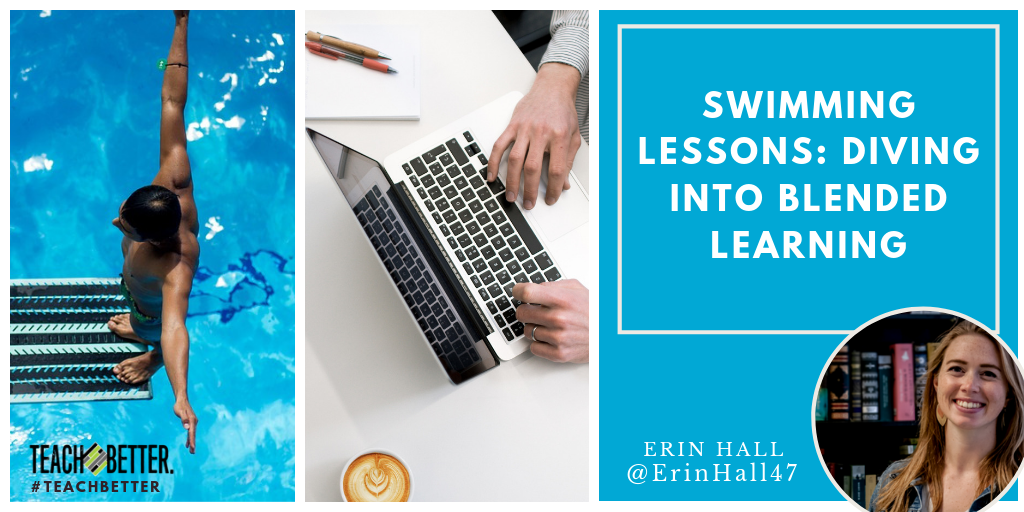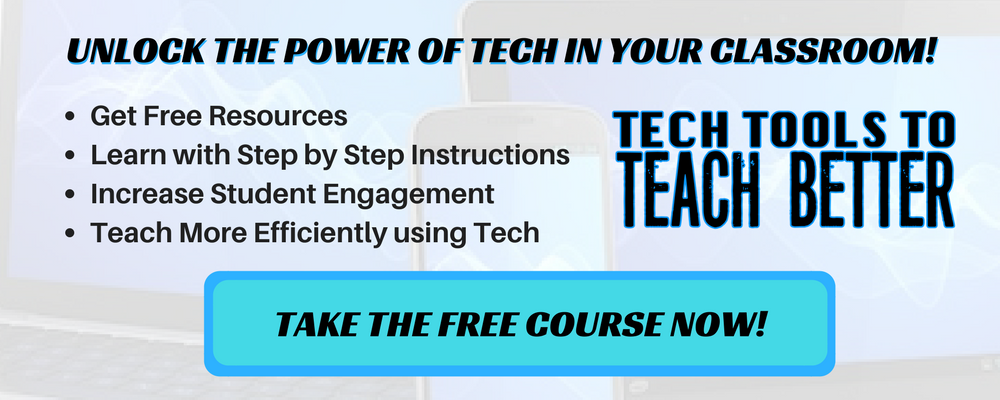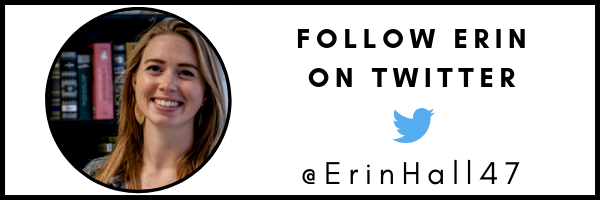In this post:
- Learn what blended learning actually is and why it is so powerful
- Strategies for blended learning that you can do in 5 minutes, 15 minutes, and half a class
- Strategies for blended learning that transform your practices as a teacher
I teach high school English, and when I heard the words “Blended Learning” for the first time I said, “Oh I’m already doing that! I have my students research content, create presentations, and take online quizzes!”
Then, I actually looked up the definition.
The Online Learning Consortium defines blended learning as a method of teaching that “integrate[s] online with traditional face-to-face class activities in a planned, pedagogically valuable manner.” In a perfect world, blended teaching practices would result in the classroom content becoming more dynamic and relevant to students of every learning style because the content reaches them in differentiated and personalized ways.
Really implementing the best practices of blended and personalized learning in my classroom was going to take more than a mindset shift - it was going to take time and effort. #TeachBetter Click To TweetI forced myself to take a step back, and I realized, can’t my students do all of those things without tech? Absolutely. Am I getting the most use out of the tech my school offers, or are my students accessing my content in new or personalized ways? Not even remotely.
That realization was incredibly daunting. Really implementing the best practices of blended and personalized learning in my classroom was going to take more than a mindset shift – it was going to take time and effort, and I was afraid of taking risks. This is something I’m still working on this every single day!
To preface this post, I am a former swimmer and swim instructor. I learned very early on that, while everyone can swim, it takes a lot of practice and risk-taking. When you get in a pool, you may already know how to hold your breath underwater, but the idea of competing in the 200 Freestyle is terrifying. This post is designed to meet YOU where you are, and give you strategies for your level of comfort – so let’s dive in!
Hold Your Breath: The 5 Minute Strategy
If you only have a few minutes to create a new product or implement a new tool in your class, then I recommend making a Google Form for a formative assessment. It is crucial to continue checking in with your students to gauge comprehension or get feedback on your lesson, and Google Forms provide a wealth of data in a short amount of time with minimal effort and prep on your part! Open up a new Google Form, add 2-3 questions, make sure you are collecting student emails (for grading purposes), and watch the data appear! This formative assessment strategy allows for student voice in your classroom and is a great introductory tool for anyone exploring blended practices!
Practice Floating: The 15 Minute Strategy
Review time! Are you going over Vocab or reviewing for the upcoming Unit Test? I love using Kahoots and Quizlet Live as a review tool! First of all, these tools turn content reviews into a game for students, bringing out their competitive and collaborative skills and truly engaging them in the review. Second, there are so many Kahoots or Quizlet sets out there, you could probably find one for your unit without spending time creating them. And third, these tools provide really great formative data! Kahoot will literally send a comprehensive overview of how each student answered every question directly to your Google Drive, while the Quizlet data relies more on observing each group and how they are managing the questions. If you’ve got 15 minutes, try a review game!
[scroll down to keep reading]Learn to Kick: The Half-Class Strategy
You’ve tried some different formative assessment strategies, and you’ve used some awesome tools in your class… now what? Are you ready to give over half of your class time to your students? Using Hyperdocs, create a Playlist for your students to access your content at their own pace. This is an awesome strategy to incorporate student choice in your classroom! Check out this Sonnet Playlist that I created for my students. This document allows my students to choose how they learn about sonnets and save resources for their final creative writing assignment. I am holding them accountable through Google Forms within the Playlist, and in those Forms I can check their understanding of each aspect of Playlist. This does take a bit of front-loading, but you are able to control exactly what options your students have while allowing them to choose how they are accessing the information.
Move Your Arms: The Whole-Class Strategy
This is the step that requires flexibility! And yes, I mean both in the pool and in the classroom. I am a big fan of Project-Based Learning because it is completely student-centered and reinforces the relevance of every content area. It allows hidden student talents to shine, and connects the community with your classroom! Two amazing educators promoting PBL in every grade level and content area are Mike Miele (Highlander Institute, Founder of #PBLRI) and Rae Hughart (Teach Better Team, Creator of the Teach Further Method). Trying out a project-based unit or lesson takes research and structure for your students, but allows them to have creative direction and relative freedom on how they are sharing their learning. This is a great place to start that research! It also takes a great deal of trust in your students, but you’ll be really surprised how they eagerly rise to the challenge!
Try a Flip Turn: The Whole-Practice Strategy
Have you ever heard the term ‘Flipped Classroom’? It is a completely student-centered practice, where you front-load the content and set a structure for assessments, but students work independently in class. You essentially become your own co-teacher, assisting the students when they get stuck or breaking down a problem step-by-step. I saw this work incredibly well in Barrington High School math teacher Jason Appel’s classroom, but he admitted that it took a tremendous of work on his part creating the entire unit of videos in advance that allowed the students flexibility to work at their own pace. He uses GoFormative for his Playlists, and rolls around the classroom in a wheely chair with an iPad ready to add to his content videos and individually assist students.
I personally found success in my English class when I flipped my Romeo & Juliet unit; I used Screencastify to make videos of me, reading aloud the play while the pdf scrolled up the screen, and uploaded those videos to EdPuzzle, where I added reading comprehension questions. Students accessed this content on their own time, at their own pace. In class, we did deep dives into different areas of the text, creating artwork, acting, creatively writing, and fully developing each character of the play. This kind of unit depth was not possible when I was spending all my class time reading the play, and the whole experience was really valuable to my students!
(Learn how to use Screencastify here!)
Time to Compete! The Lifestyle of a Blended Learning Teacher
“Diving into Blended Learning” means becoming a Blended Learner yourself! Every single day there are new tools, strategies, and ideas, being created and shared. How are you connecting to this network? Hop on Twitter or Instagram, follow some awesome teacher blogs, or just poke your head in the classroom down the hall where your colleague is experimenting in their classroom! You need to become a connected educator unless you want to be reinventing the wheel every time you want to experiment with these tools and strategies. But, since you are already reading this post, you are already on your way there! Find your tribe and you are good to go!
No matter where you already are, I hope you are excited to dive into Blended Learning. I can’t wait to cheer you on and support you in any way I can – please add me to your team, and let me know your thoughts!
About Erin Hall
Erin Hall is an English Teacher at Chariho Regional High School and the Founder & CEO of the Young Educators Society of Rhode Island. YESRI is an organization where educational professionals with less than 10 years of experience can connect, collaborate, and learn from each other.




